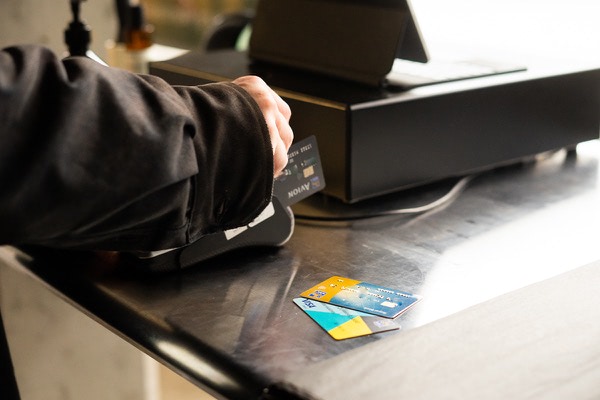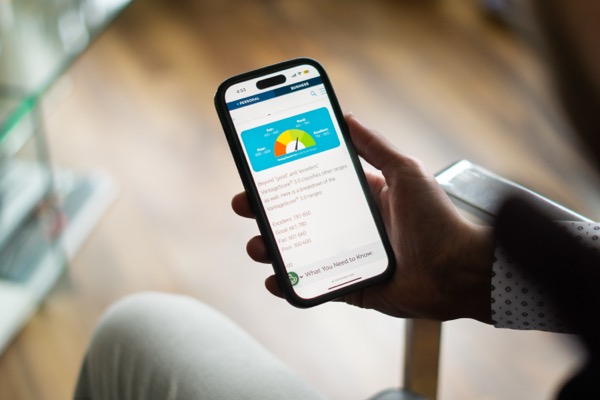Improving your credit score before buying a home? Great idea! Here are 5 tips to help you raise your credit score for homeownership.

5 tips to maintain a realistic budget
Are you trying to get 2022 off to a good start by creating a budget? When done properly, budgeting allows you to save money for your future goals, and achieve steady financial health. The problem is, it’s not always easy to create or maintain a realistic budget. You might be unsure how to get started or how to create habits that will stick. However, there are some tips you can follow that will guide you towards the ideal budget for your lifestyle. Since our goals are unique, our budgets need to be as well. Here’s how you can get started!
#1 Determine your goals
First, you need to figure out what exactly you’re budgeting for. Perhaps you want to buy your first home, complete renovations, upsize, or save for a family vacation. Maybe you just want to ensure you have a stable financial life, and emergency funds set aside. Whatever the case, take some time to think about what you want to work towards. Only from there can you really start planning your budget, because your budget will differ based on what you want to achieve. It’s easiest to maintain a realistic budget if you have a clear idea in your mind, instead of just a vague goal, of what you want to do with your funds. You won’t get very far if you only occasionally toss money into a savings account!
#2 Divide your essential and non-essential spending
We all have two kinds of spending habits: essential and non-essential. Of course, essential payments include things like rent, mortgage payments, utilities, taxes, and groceries. Your non-essential spending includes dinners out, coffee runs, and shopping trips. Now, it’s time to separate the two and see where you spend the most money. Looking at your spending habits, you can see if there’s anywhere you can trim. Remember, you DON’T have to cut out all non-essential spending. It’s next to impossible to maintain that kind of strict budget, and depriving yourself of every treat will only have negative results. However, maybe there’s room for you to spend less on things you don’t need, and save extra money from that. Can you order takeout once a week instead of twice? Do you need to take advantage of every sale? The money you save here can be put to good use if you tuck it away for the future.
#3 Don’t increase your credit limit
You might be given the chance to increase your credit card limit, but if you’re trying to budget, it’s best to avoid this temptation. Since you’re likely not looking to spend more money, it’s best not to give yourself the chance to do so. The more credit you have available, the more likely you are to spend, which can put you into financial trouble if you can’t handle the payments later. In order to maintain a realistic budget, you need to have realistic spending goals. Just because you can spend a certain amount of money doesn’t mean you should. Consider what is, or isn’t, a good move for your financial situation before moving forward.
#4 Consider budgeting apps
Sometimes, budgeting alone can be tricky. That’s when budgeting apps can really come in handy! There are hundreds of budgeting apps available, and all of them have the same goal: to help you save and manage your money. However, the strategies of these apps can vary, so you can pick one that suits your needs best. Here are a couple of our favourites:
Goodbudget
This app uses the envelope system to divide your money into digital envelopes for spending, like groceries, mortgage payments, and non-essential items. The idea is, you only spend out of the designated envelopes, and once an envelope is empty, you stop spending. This forces you to only put what you need into each envelope to reduce extra spending and keep track of your payments.
Mint
Mint is a handy, free app that simplifies your spending. It allows you to connect your bank accounts to the app to track your spending, notify you of upcoming bills, and look back on previous payments. It’s a bit like carrying the bank in your pocket, without as much stress.
#5 Review your spending
Finally, as hard as it can be, it’s important to review your spending so you know where your money is going, and whether your budget is on the right track. If you need to make changes to your budget, you won’t know unless you check your account and see where your situation stands. At the end of each day, take a look and see what you spent. Once a week, you should do a big review of your spending, and see if your budget is on the right track. This is definitely the fastest way to know if you need to make any adjustments. It takes less than five minutes, but it can make a big difference in the long run.
We know it can be challenging to maintain a realistic budget, and it’s okay if it takes you a few tries to get it right! Budgeting is often a case of trial and error, and it requires some tinkering to find a plan that suits you. However, once you find the perfect budgeting path, it allows you to save more money and accomplish your goals.
If you have any questions about budgeting or your mortgage, get in touch with us at Clinton Wilkins Mortgage Team! You can call us at (902) 482-2770 or contact us here.


